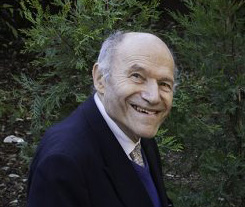Book Review by Richard Sharpe
February 2023
LEO Remembered edited by Hilary Caminer and Lisa-Jane McGerty, published by Leo Computers Society, Second edition, 2022, available here.
LEO Remembered is an excellent contribution to the history of UK computing with its focus on the world’s first computer for business applications. The LEO story has been told before: as early as 1980 in a short form by Simon Lavington (Early British Computers, Manchester University Press 1980) and at length by, for example, Peter J Bird in 1994 (LEO: The First Business Computer, Hasler Publishing Ltd). But it has never been told so expansively by the many who worked making the 71 LEOs identified by the editors or on applying them to business and scientific applications.
John Pinkerton, the lead electronic engineer working on the LEO I, explains the speed of processing: “Despite its slow speed LEO could run a sophisticated payroll, including cash dissection and department totals, at the rate of fifty persons per minute, printing two- or three-line payslips, two copies at once, on a line printer.”
Human stories
It’s the human stories that count and resonate today rather than the speeds and feeds which have been overtaken by successive generations of technology. Stan Holwill was engineer in charge of maintenance on LEO II/1 in the mid 1950s. There was only one fault outstanding, on the card punch annex: it stuck on the 13th card and it happened about every 10 days. “I finally resolved the problem whilst I was asleep. I usually slept well, however on one morning I woke up at three o’clock with a theory as to what was causing the problem together with a modification to stop the fault. The following day I applied the modification and the fault never occurred again.”

CAV, the vehicle components manufacturer based in Acton London, was one of the pioneering users of LEO. Anthony Thorpe worked for CAV which had housed its LEO III in a computer room with a large glass window over looking a busy road so that all the world could see it. “It was easy to walk in through the office door, then straight through the data prep area, the magnetic tape store and into the computer room,” he said. “One day, an angry employee walked right into the computer room, demanding to know ‘Where’s my money – I know you’ve got it all in here’. Some obscure bug in the payroll system had caused him to lose out on what he should have received that week.” They managed to work it out and the employee got his money.
Famous members who worked on LEOs


Women working on LEO
LEO’s managers were not only progressive in their use of IT but also in their personnel policies. While it was routine in other companies to confine women to clerical or factory jobs, LEO recruited women as programmers. Fourteen of the entries are from women. Penny Vaughn, who joined in 1964, said the years working on the LEO were very happy ones: “We felt in some way like pioneers, and there was good camaraderie in the office and some socialising after hours … The work was varied and success was rewarded. I enjoyed the responsibility given to me by the bosses (invariably men) of the companies for whom we were designing and implementing systems. They sometimes seemed taken aback when meeting me for the first time, but there was never any problem.”
Another of the women working on LEO was Mavis Hinds of the Met Office. She and her boss used LEO I at the end of 1951 to produce weather charts. Hers is one of the shortest entries: for more information see our blog about her. Also see the Met Office’s archivist Catherine Ross and her tales of using IT in the Met Office.
The progressive nature of LEO’s employment policies extended to Africa where it employed an African computer operator in South Africa, according to Norman Witkin.
There is no real mention of the LEO 320 and 326 models designed by the LEO team but implemented after the merger with English Electric Computers. These are not included in the total given above.
LEO Remembered is a homage to these pioneers of the LEO and is an entertaining and informative read.